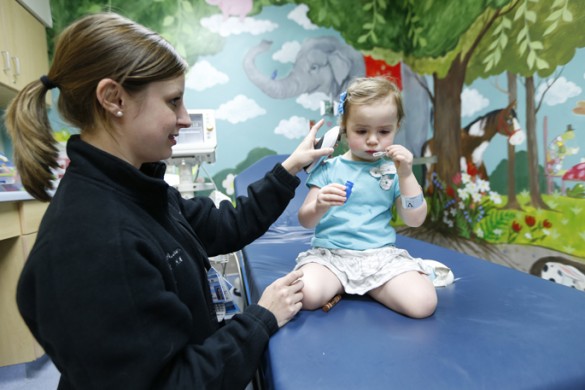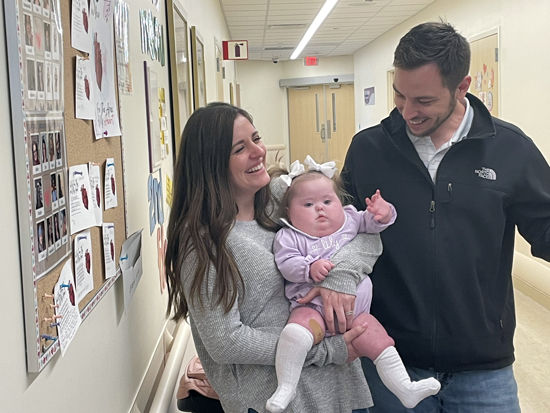
A patient comfort protocol is rendering minor procedures less painful for younger outpatients of the Monroe Carell Jr. Children’s Hospital at Vanderbilt.
The protocol allows nurses to use pain-preventing sprays and ointments prior to blood draws, intramuscular injections, IV insertions and venous catheter access. Children younger than 6 months old may also receive small amounts of a sweet solution by mouth, which helps increase pain tolerance.
The protocol is being piloted in the Pediatric Endocrinology and Pediatric Rheumatology clinics. Similar comfort measures have long been standard practice in the Pediatric Hematology and Oncology Clinic.
Outpatient procedure rooms have also been enhanced as part of a broader patient comfort initiative in Children’s Hospital. HGTV sponsored the nature-themed decoration of a procedure room in the Hematology and Oncology Clinic. In the Medical Specialties phlebotomy room, where patients go to have samples of their blood drawn for lab tests, younger patients are distracted from their procedure not only by their phlebotomist but also by colorful decorations and by a TV running children’s programs.
“One of our best opportunities to improve the patient experience and cement Vanderbilt’s position as the premier site for children’s care is to make the experience pain-free for the child,” said the leader for development and adoption of the protocol, Suz Kaprich, R.N., MHA, administrative director for Children’s Hospital outpatient nursing.
“When health care providers use the drugs and techniques recommended by the protocol, children will have an overall positive experience, which improves their compliance with health care when they become adults,”
A clinic-by-clinic rollout of the protocol has begun. Given that the ointments take 30 minutes to become active, implementation of the protocol involves some clinic workflow alteration.
According to Kaprich, before development of the protocol, pain prevention for minor procedures was occurring in Children’s Hospital outpatient areas on a sporadic basis.
“We look forward to the protocol becoming part of our culture, something we practice on every patient at every encounter, every time,” Kaprich said.
Kaprich convened physicians, pharmacists, nurses and Child Life specialists who spent a year developing the protocol. Key contributors include pediatric rheumatologist Brent Graham, M.D., M.S., general pediatrician Barron Patterson, M.D., child development specialist Nirupama Madduri, M.D., and Child Life specialists Katherine Bennett and Erin Munn.















